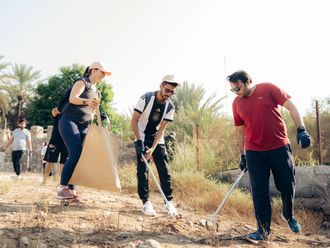
Dubai: It’s every accomplished mountaineer’s dream — and nightmare.
It is K2, known to many as the ‘Savage Mountain’ because of its unpredictable and harsh weather. It is the world’s second highest mountain at 8,611 metres, with only Mount Everest taller, by just 200m. But this mountain, wedged between Pakistan and China, has a reputation of being more deadly.
For every four who succeed in reaching the summit, one dies in the pursuit, mostly during the descent. In 2008, K2 claimed 11 lives in 48 hours in the mountain’s single worst tragedy.
UAE-based adventurer Adrian Hayes is no stranger to the mountain’s dangers. Last year, he and other international expeditions were forced to abort their summit to K2 after a deadly avalanche wiped out Camp 3, killing two of his co-climbers, father and son Marty and Denali Schmidt.
But the fatal attraction between the mountaineer and the mountain is like no other. And Hayes will attempt to climb it again this year, which is the 60th anniversary of the first summit of K2. If he succeeds, he will be the first UAE resident to conquer the mountain.
“Despite the tragedy, I had few doubts that I would return in 2014 — but with changes to the practices in place from the ground operators in Pakistan,” Hayes, who holds two Guinness World Records for polar expeditions, told Gulf News. “So it’s quite an important year and will be a fitting tribute to all those who have succeeded — and succumbed — in attempting it.”
The mountain is a cone of ice and limestone with slopes of 45 degree angles or more, sometimes near vertical, making it a very technical climb throughout.
“It is chalk and cheese and the statistics tell it all,” the British adventurer said. “Everest may be 200 metres higher but it has been summited by over 4,000 climbers in sixty years, whereas K2 has been summited by precisely 328 in the same period.
“It is very steep, sustained steep, with no respite, exposed, subject to rock fall, avalanche and unstable weather. And above all, it has deep snow on its upper slopes. Combine that together with its enormous height and one has some stark reasons why it’s widely regarded as the hardest high-altitude mountain to climb on Earth.”
The mountain holds the constant threat of avalanches at Camp 3. At Camp 4, climbers have to traverse beneath an overhang of enormous ice, or seracs, that could collapse at any time.
With all these dangers in mind, Hayes said he is not taking any chances. He has changed tactics since the 2013 expedition, including going with more Sherpa support, to maximise his chances of success.
“We are leaving much earlier to have more time to set up camps and have a longer weather window to attempt a summit,” he said. “We are also likely to attempt, depending on conditions, a different route — steeper but less avalanche danger.”
Hayes will join an international team of six climbers and six to nine Sherpas in support. They are set to leave on June 15, with a summit bid likely at the end of July.
When asked what he would take from the 2013 experience, Hayes said: “Obviously it was a tragic incident that had a very sobering effect on those of us left at base camp and thoughts will forever be with Marty and Denali Schmidt and their families.
“But it brought home some salient lessons on the difference between measured risk and reckless risk as well as the critical need to listen, feel and respect nature. The mountains will always be there; the secret is to make sure you are too.”












